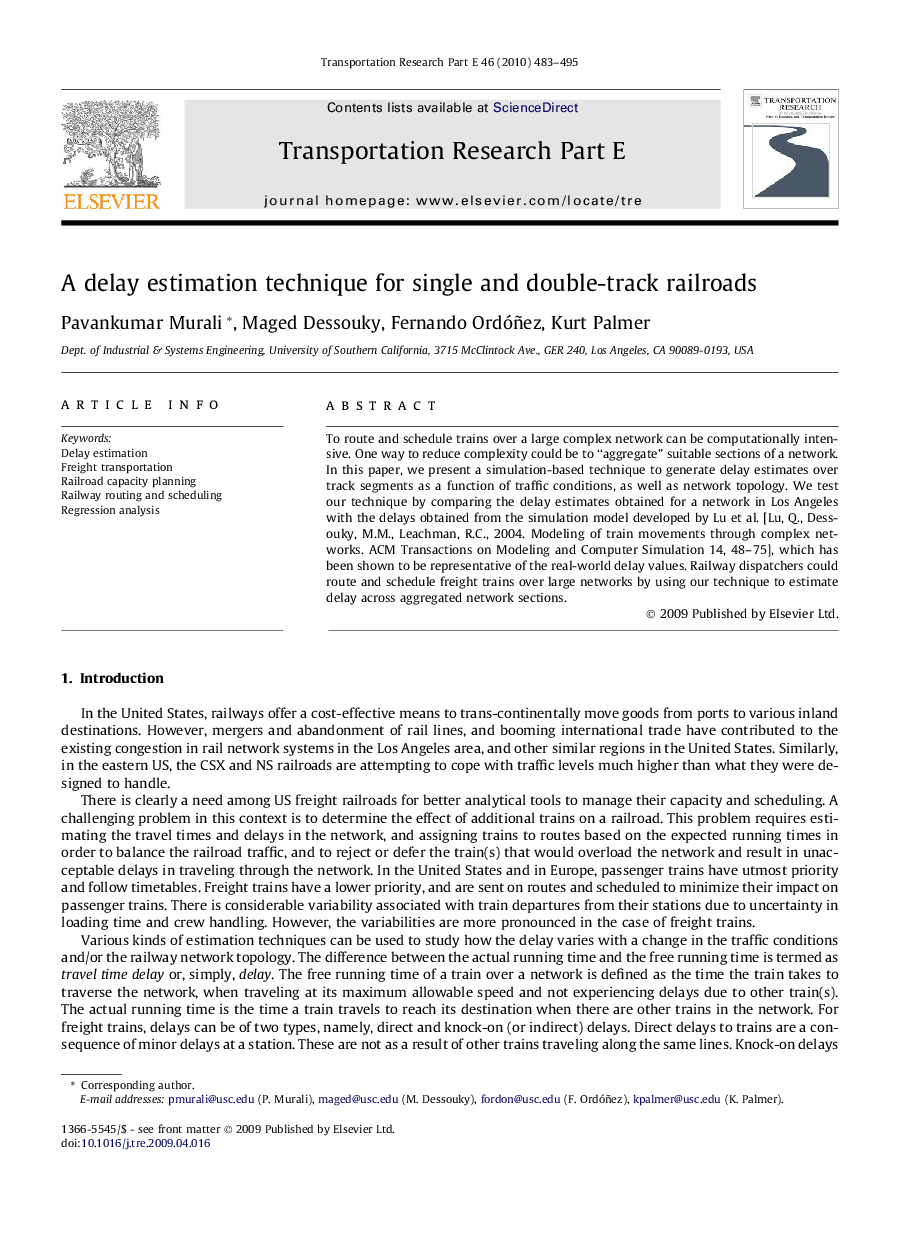| کد مقاله | کد نشریه | سال انتشار | مقاله انگلیسی | نسخه تمام متن |
|---|---|---|---|---|
| 1023804 | 941647 | 2010 | 13 صفحه PDF | دانلود رایگان |

To route and schedule trains over a large complex network can be computationally intensive. One way to reduce complexity could be to “aggregate” suitable sections of a network. In this paper, we present a simulation-based technique to generate delay estimates over track segments as a function of traffic conditions, as well as network topology. We test our technique by comparing the delay estimates obtained for a network in Los Angeles with the delays obtained from the simulation model developed by Lu et al. [Lu, Q., Dessouky, M.M., Leachman, R.C., 2004. Modeling of train movements through complex networks. ACM Transactions on Modeling and Computer Simulation 14, 48–75], which has been shown to be representative of the real-world delay values. Railway dispatchers could route and schedule freight trains over large networks by using our technique to estimate delay across aggregated network sections.
Journal: Transportation Research Part E: Logistics and Transportation Review - Volume 46, Issue 4, July 2010, Pages 483–495